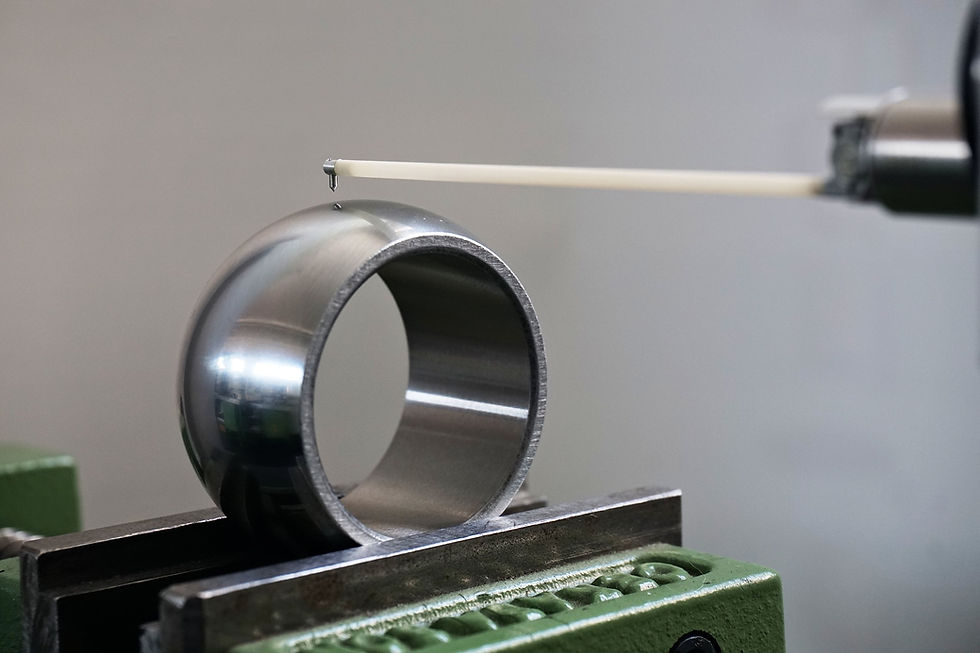Another Quality Problem? You Need to Take These 6 Steps!
- Jared Haw
- Jul 8, 2019
- 3 min read
Updated: Nov 25, 2020

Have you ever been kept up at night worrying about production quality issues? If you are a product creator, chances are you have.
Having rejected parts shipped or even worse, landing in the hands of your customers is a scary thought for any brand. Of course, you would rather catch these issues during processing and assembly. Nonetheless, when issues do occur, your factory needs to be quick on their feet to develop a plan to resolve these quality problems.
Any factory claiming to have never had a quality issues is flat out lying to you. No factory has ever gone through production without any hiccups. Only the best factories can control quality and ensure rejected parts don’t leave their facility.
If your factory informs you there is a problem, don’t panic. In fact, take ease knowing your factory caught the problem before your product ends up in the hands of the masses. If you believe that the product can’t ship due to defects then your factory should do the following:
Identifying the issue
Pretty basic, “what is the problem”?
Usually the quality team documents the problem and collects a few samples of the defective part. The quality team calls a meeting with the relevant team members, such as engineering, production, supply chain and others as needed to discuss and ensure everyone understands the issue on hand. Only when you know the issue can you develop the root cause.
Figuring out the root cause
Now that you have figured out what the problem is, you can narrow down the BIG why. Why did this issue occur?
Most of the time, the root cause won’t be obvious and stare you right in front of your face, you will need to dig a little deeper to figure out where the problem occurred.
The best way to proceed with this is to continually ask yourself why, why did this issue occur? Once you dig so far that you can no longer ask why is when you have arrived at your root cause.
Some helpful tools to analyze and root out the problem is by utilizing the the 5 Why’s approach or by creating a Fishbone Diagram.
Develop a corrective action report
Drawing from root cause analysis, we know where the issue came from.
A corrective action report goes into detail and flushes out options to completely eliminate the problem. This report is meant to eliminate the issue from occurring again. Most factories don’t look into the problem deeply enough to be able to develop a solution to eradicate from happening again most will simply put a band aid and hope it won’t happen again
The goal of the corrective action is to eliminate the issue from occurring again. If on the next PO, the problem reoccurs, your factory did a poor job of developing a corrective action report. They just found a temporary solution which really doesn’t do anyone any good in the long-term.
The corrective action is a report that will be completed by the quality department with the support of the responsible department. For example, if the part isn’t functional and it’s due to a tolerance issue, the engineering team is responsible for providing the quality team with the corrective action.
Using the same example, the engineering team will be responsible for carrying out any engineering change order (ECO). If the solution comes from a different department, that department is responsible for ensuring the solution is sustained and the problem won’t re-occur.
Execution
The corrective action report, puts in place a plan to eliminate the problem. During the execution steps is when those tasks are carried out. Each department will be responsible for carrying out their task and will be overseen by the quality department to make sure each step is being properly followed.
Monitoring
Just because the task has been executed doesn’t necessarily mean we are in the clear. Monitoring the situation will have to take place to ensure the problem is kept at bay and resolved. Remember, this is not simply to prevent this order from going wrong, but for all future orders as well.
Additional tasks will be added to the quality report to continuously monitor each part that comes off the production line.
Sustainability
This process must be completed each time there is a quality problem. A factory that respects their clients and cares about the output of their products will invest into their quality department.
For each issue that occurs, your factory should be open with the reports and provide you with a copy for your reference.
If you don’t feel as if the corrective action is detailed enough, speak with your point of contact at the factory. It’s in the best interest of everyone to have the report be as detailed and transparent as possible.




Facing another quality problem? It's crucial to address it promptly by identifying the root cause, implementing corrective actions, and monitoring results. Taking these 6 steps ensures continuous improvement and helps prevent future issues, maintaining high standards in your processes.